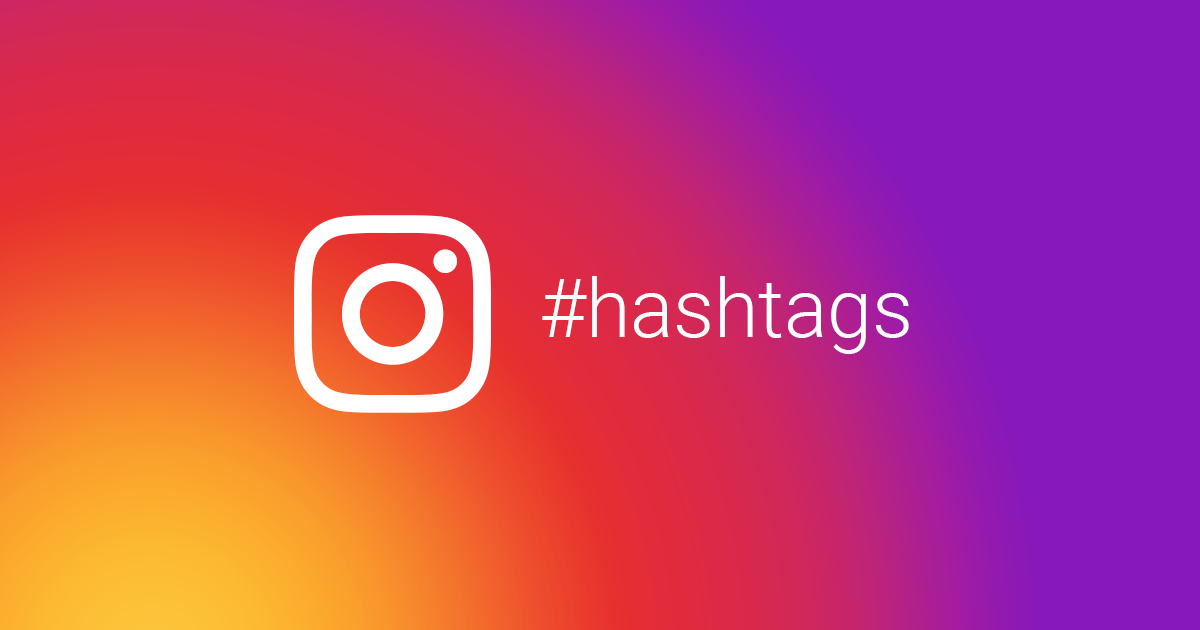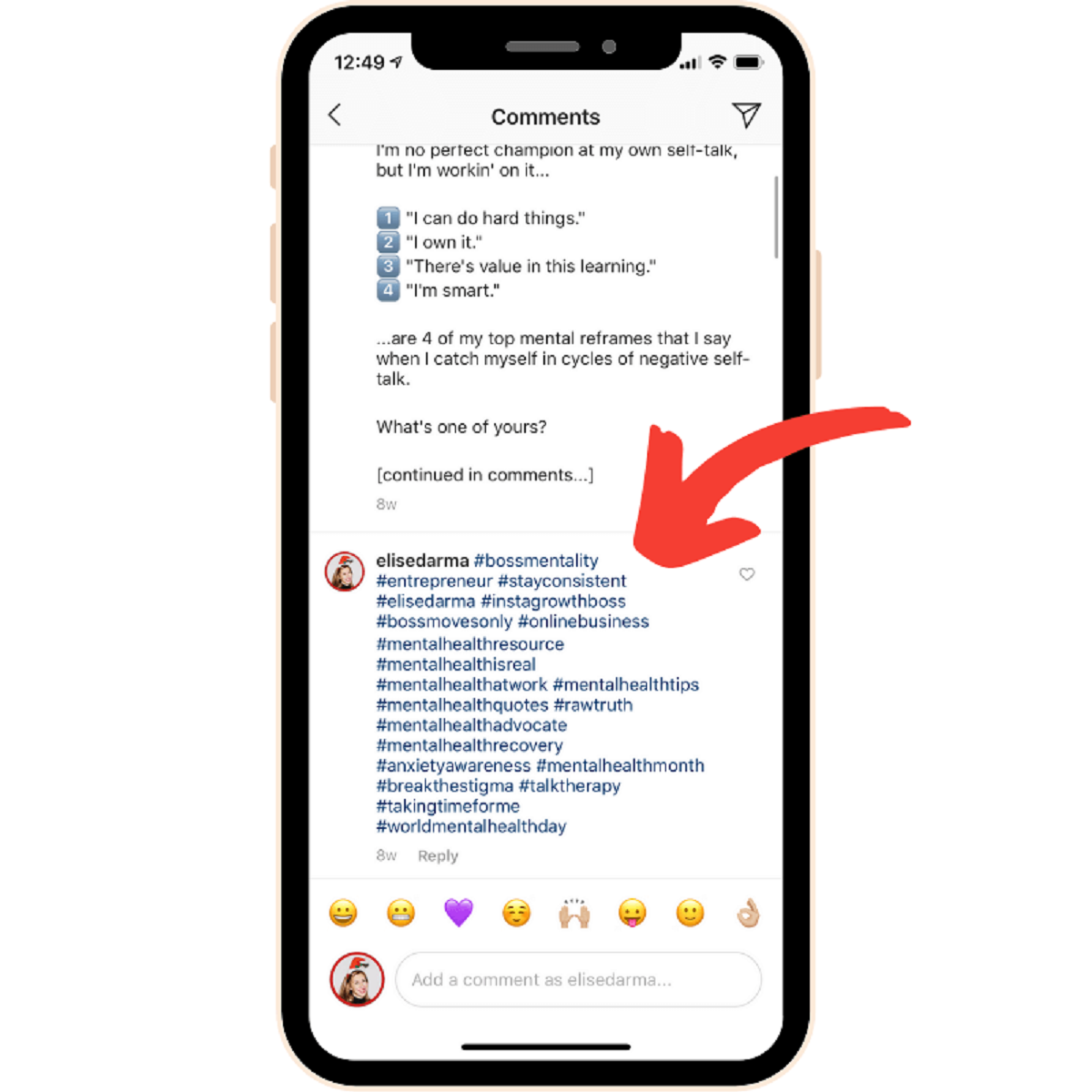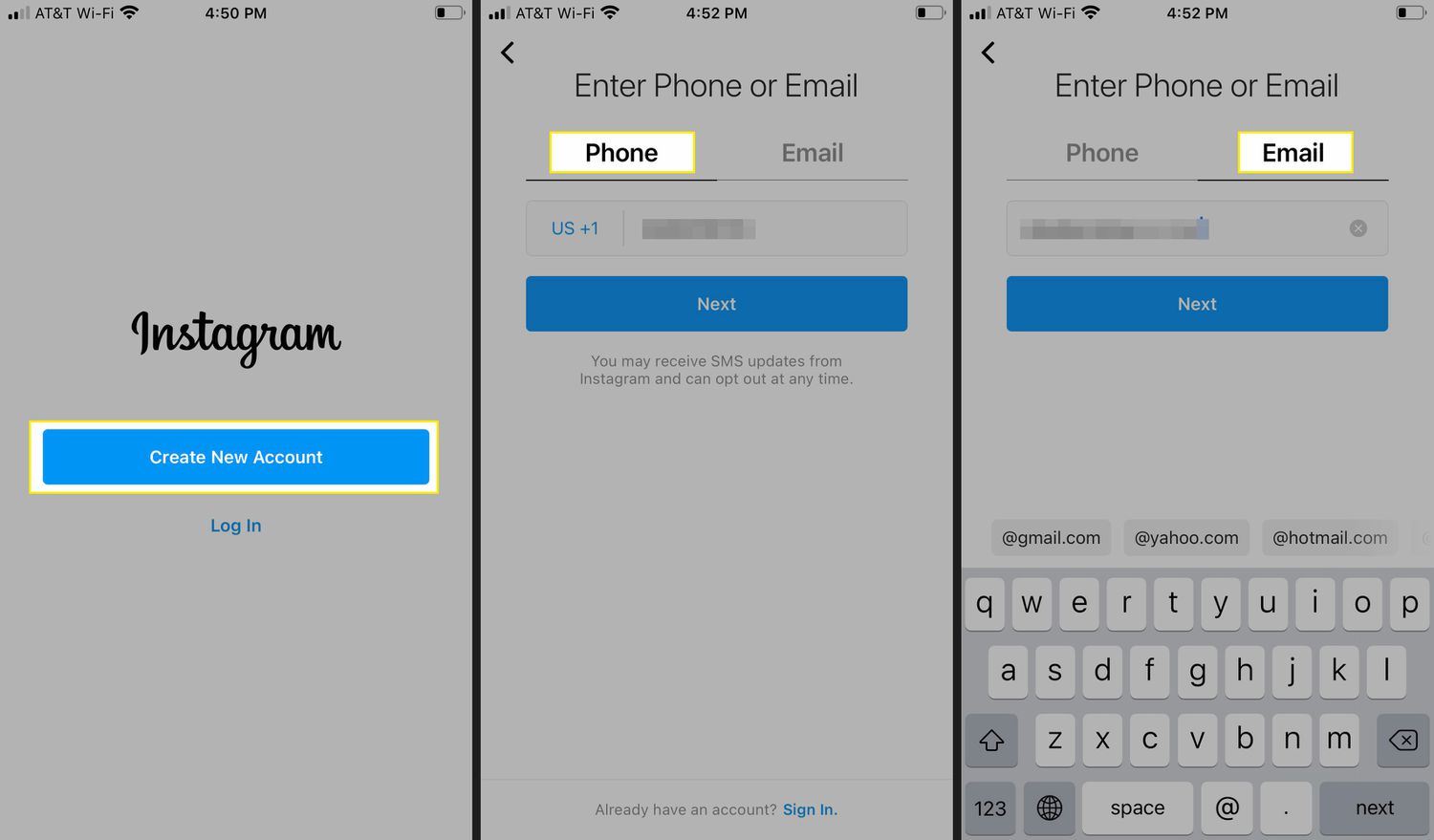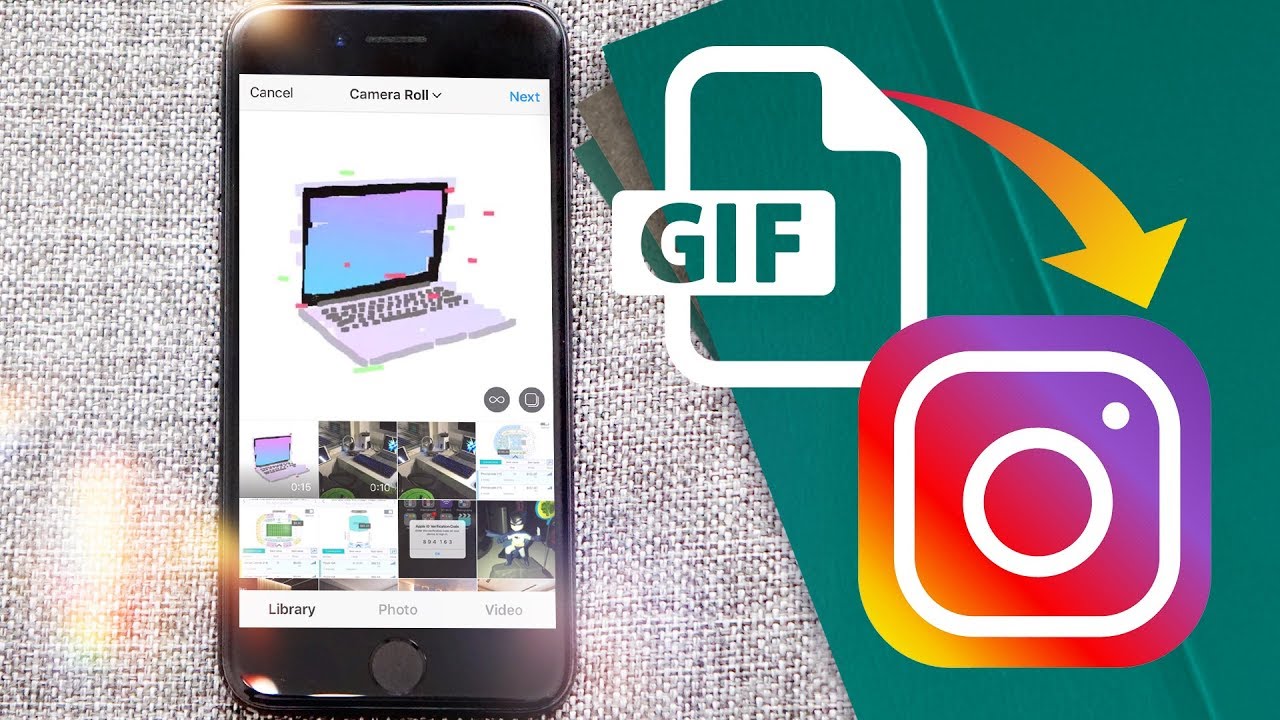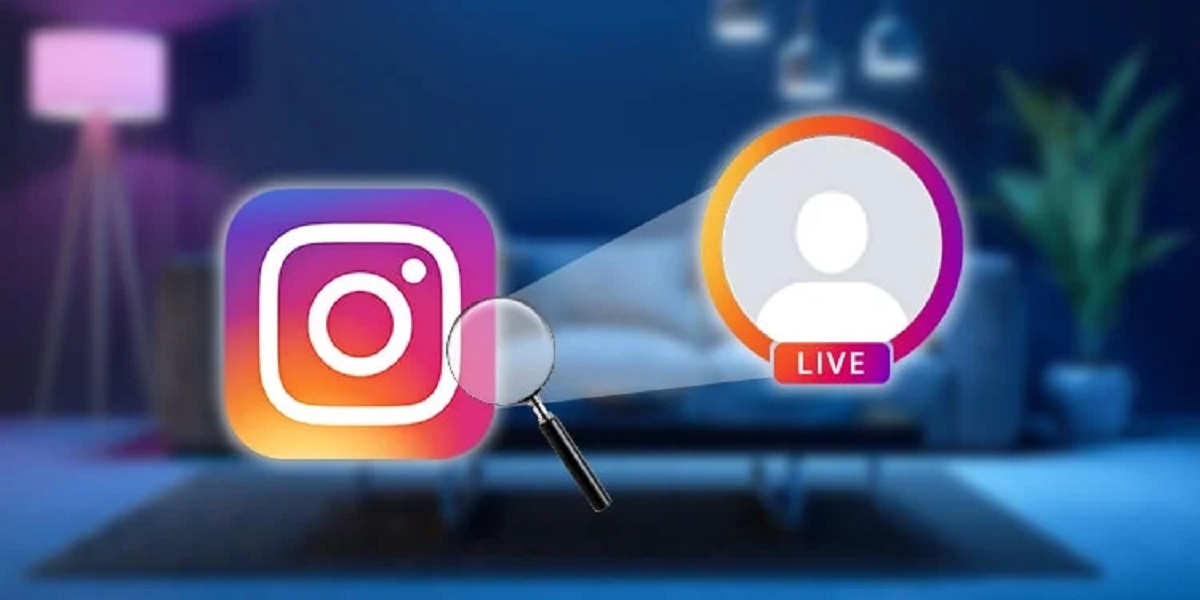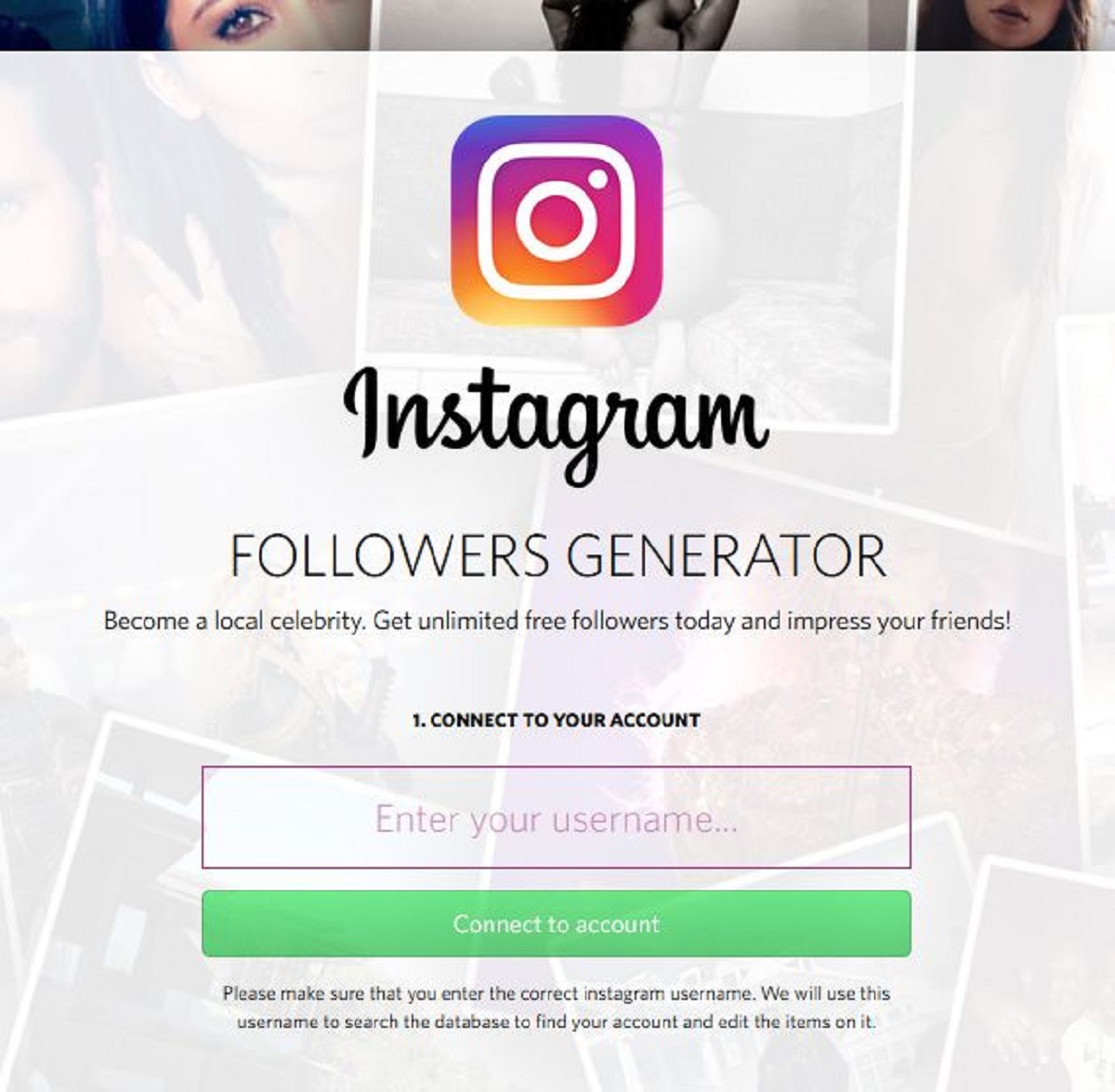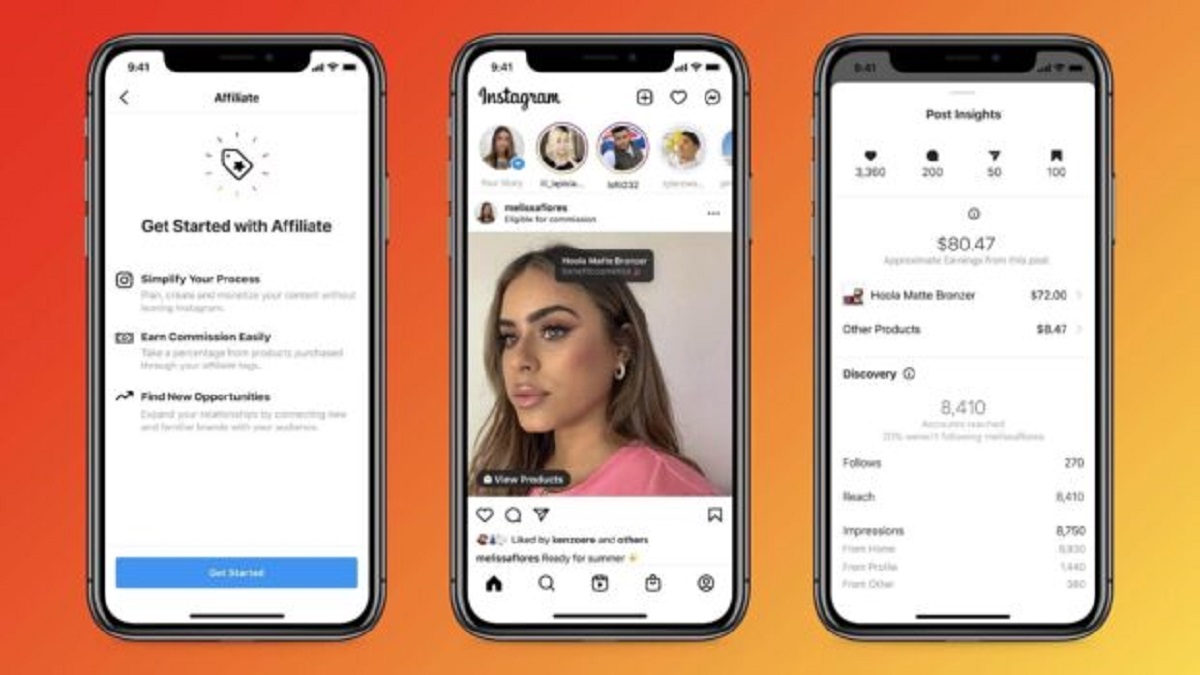Introduction
In this digital age, social media platforms have become an invaluable tool for individuals and businesses alike. With millions of users, Instagram stands out as one of the most popular platforms for sharing photos and videos. To maximize their reach and engagement, many users harness the power of hashtags on Instagram.
Hashtags have transformed the way content is discovered on Instagram. By using relevant hashtags, users can categorize their posts and make them more discoverable to others who are interested in the same topics. Whether you’re a social media influencer, a business wanting to promote your products, or simply an individual looking to share your personal experiences, understanding how to effectively use hashtags on Instagram is crucial.
In this article, we will explore the importance of hashtags on Instagram and dive into the question of how many hashtags you should use on this platform. We will also provide you with best practices for using hashtags, tips for researching and choosing relevant ones, and examples of popular hashtags in different niches.
By the end of this article, you’ll have a better understanding of how to leverage hashtags on Instagram to expand your reach, increase your engagement, and connect with your target audience. Let’s dive in and explore the power of hashtags on Instagram!
The Power of Hashtags on Instagram
Hashtags play a pivotal role in increasing the visibility of your Instagram posts. When used strategically, hashtags can expand your reach beyond your existing followers, expose your content to a larger audience, and attract new followers who share similar interests.
One of the key benefits of using hashtags on Instagram is the ability to categorize your posts. By including relevant hashtags, your content becomes part of a larger conversation and can be easily discovered by users who are searching for that specific topic. For example, if you’re a food blogger and you include hashtags like #foodie, #foodlover, and #foodphotography, your posts are more likely to appear in the search results when someone looks for content related to those hashtags.
In addition to increasing discoverability, hashtags also foster engagement on your posts. Users who follow specific hashtags or search for them are more likely to engage with your content if it aligns with their interests. This can result in more likes, comments, and shares, ultimately boosting your visibility and creating a sense of community around your content.
Another advantage of using hashtags on Instagram is the opportunity to participate in trending conversations and challenges. Popular hashtags like #ThrowbackThursday or #MotivationMonday provide a chance to join the broader Instagram community in sharing and engaging with content related to specific themes or trends. By including these trending hashtags in your posts, you can tap into a wider audience and increase the likelihood of your content being seen and shared.
It’s important to note that the power of hashtags extends beyond attracting users to your individual posts. Hashtags also contribute to the growth of your overall Instagram presence. When users discover and engage with your posts through hashtags, they may be compelled to explore your profile, follow you, and become long-term supporters of your content.
In the next section, we’ll delve into the question of how many hashtags you should use on Instagram to strike the right balance between visibility and effectiveness. So, let’s continue our exploration and unravel the hashtag mystery on Instagram!
How Many Hashtags Should You Use on Instagram?
Finding the perfect number of hashtags to use on Instagram can be a bit of a balancing act. On one hand, using too few hashtags may limit the discoverability of your content. On the other hand, using too many hashtags can make your post appear spammy and reduce its overall quality. So, how do you strike the right balance?
Instagram allows users to include up to 30 hashtags per post. While you have the option to use the full quota, it’s not necessary to maximize it every time. The optimal number of hashtags may vary based on your niche, audience, and the specific goals you have for your Instagram account.
A general guideline is to aim for a mix of popular and niche-specific hashtags. Popular hashtags have a higher search volume, which means more competition for visibility. However, they also have a larger audience, increasing the potential for engagement. Niche-specific hashtags, on the other hand, may have lower search volume but are more targeted to your specific audience, increasing the chances of connecting with users who are genuinely interested in your content.
Starting with a moderate number of hashtags, such as 10 to 15, can be a good strategy. This allows you to include a mix of popular and niche-specific ones while maintaining a clean and visually appealing caption. As you gain more experience and insight into your audience’s preferences, you can experiment with different hashtag combinations and adjust the number as needed.
Another aspect to consider is the placement of your hashtags in the caption. Some Instagram users prefer to separate their hashtags from the main caption by using line breaks or periods. This can help maintain the aesthetic appeal of the post, especially if you’re targeting a more visually-oriented audience. Alternatively, you can include the hashtags within the main caption if you feel that it blends naturally and doesn’t disrupt the flow of your content.
Ultimately, the key is to strike a balance between using enough hashtags to increase discoverability and engagement, while also maintaining the overall quality and cohesiveness of your post. It’s important to regularly analyze and assess the performance of your posts with different hashtag strategies, so you can fine-tune your approach and optimize your results.
Now that we’ve discussed the optimal number of hashtags, let’s explore how to research and choose relevant hashtags that align with your content and target audience.
Understanding Instagram’s Hashtag Limit
To effectively use hashtags on Instagram, it’s crucial to understand the platform’s hashtag limit. As of now, Instagram allows users to include up to 30 hashtags per post. However, it’s important to note that using the maximum number of hashtags doesn’t guarantee better visibility or engagement.
While some users may assume that using all 30 hashtags will maximize their reach, it’s important to remember that quality is just as important as quantity. Using too many hashtags can make your post appear spammy and can even lead to your content being shadowbanned by Instagram, meaning it won’t appear in hashtag searches or reach a wider audience.
Instagram also prioritizes the relevance of the hashtags you use. This means that using hashtags unrelated to your content or using banned or irrelevant hashtags can negatively impact the visibility of your posts. It’s important to choose hashtags that are relevant to your content, target audience, and niche. Researching and using specific hashtags that align with your content will help attract the right audience and increase the chances of engagement.
Additionally, using too many hashtags may dilute the impact of each individual hashtag. When you use a large number of hashtags, your post is competing for attention with a multitude of other posts using similar hashtags. This can make it difficult for your content to stand out and may result in lower visibility and engagement.
It’s also worth noting that the hashtag limit includes both hashtags included in the caption and those added in the comments section. In terms of post engagement, there’s no significant advantage to adding hashtags in one place over the other. However, adding hashtags in the comments section may help keep your captions clean and visually appealing.
To overcome these limitations, it’s important to focus on quality rather than quantity when it comes to using hashtags on Instagram. Research and choose hashtags that are specific, relevant, and align with your content and target audience. Narrowing down your hashtags to those that have moderate search volume but are tailored to your niche can increase your chances of reaching the right audience and driving meaningful engagement.
In the next section, we’ll delve into best practices for using hashtags on Instagram, including tips for researching and choosing relevant hashtags for your posts.
Best Practices for Using Hashtags on Instagram
Now that we understand the importance of hashtags and the limitations imposed by Instagram, let’s explore some best practices for effectively using hashtags on this platform.
1. Research and choose relevant hashtags: Take the time to research and identify hashtags that are not only popular but also relevant to your content. Look for hashtags that are specific to your niche and target audience. This will increase the chances of connecting with users who are genuinely interested in your content.
2. Mix popular and niche-specific hashtags: Strike a balance between using popular hashtags and niche-specific ones. Popular hashtags like #instagood or #photooftheday have a larger audience but are highly competitive. Niche-specific hashtags may have lower search volume but are more targeted to your specific audience. Find the right combination of both to maximize your reach and engagement.
3. Be mindful of hashtag spamming: Avoid using irrelevant or excessively generic hashtags that have no connection to your content, as this can make your posts seem spammy. Instead, focus on using hashtags that accurately represent the content you’re sharing and resonate with your target audience.
4. Create branded hashtags: Consider creating a unique hashtag that represents your brand or campaign. This can help build brand identity and create a sense of community among your followers. Encourage your audience to use your branded hashtag when engaging with your content or sharing user-generated content related to your brand.
5. Monitor and engage with hashtag communities: Engage with other users who are using the same hashtags by liking, commenting, and following their content. This helps you build relationships with like-minded individuals and potentially gain new followers. Be genuine in your interactions and avoid spamming or using generic comments.
6. Experiment and analyze hashtag performance: Continuously test different hashtag combinations and monitor their performance. Pay attention to the engagement metrics of your posts and analyze which hashtags are driving the most visibility and engagement. This will help you refine your hashtag strategy and focus on the ones that yield the best results.
Remember, the key to effective hashtag use on Instagram is to be intentional and strategic. Use hashtags that are relevant, specific, and aligned with your content and target audience. By following these best practices, you can increase your visibility, attract the right audience, and drive meaningful engagement on Instagram.
In the next section, we will discuss how to research and choose hashtags that are relevant to your content and your audience.
How to Research and Choose Relevant Hashtags
Researching and choosing relevant hashtags is crucial in maximizing the visibility and engagement of your Instagram posts. Here are some effective strategies to help you find the most suitable hashtags for your content:
1. Analyze competitor hashtags: Take a look at the hashtags used by your competitors or other accounts in your niche that have a strong following. Identify the hashtags that are driving engagement for them and consider incorporating them into your own hashtag strategy.
2. Use Instagram’s search function: Utilize Instagram’s search bar to discover popular and related hashtags. Simply enter relevant keywords or topics in the search bar, and Instagram will suggest related hashtags that you can explore. This allows you to tap into trending conversations and discover new hashtags that align with your content.
3. Explore niche-specific hashtags: Look for hashtags that are specific to your industry or niche. These hashtags might not have the highest search volume, but they can help you connect with a more targeted audience that is genuinely interested in your content. For example, if you’re a fitness influencer, hashtags like #fitfam or #workoutmotivation could attract users who are passionate about fitness.
4. Utilize hashtag generator tools: There are several online tools and apps available that can help generate relevant hashtags based on the keywords you provide. These tools analyze popular hashtags and suggest related ones that can expand your reach. Some popular hashtag generator tools include RiteTag, Display Purposes, and HashtagsForLikes.
5. Follow industry influencers: Keep an eye on influencers in your industry and observe how they use hashtags in their posts. By following their lead, you can gain insights into popular hashtags and learn how to effectively utilize them within your own content.
6. Stay updated with trending events and topics: Keep track of trending events, holidays, and relevant industry topics. These can provide opportunities to join conversations and engage with a broader audience. Incorporating trending hashtags in your posts when relevant can help increase the visibility and engagement of your content.
Remember, it’s important to choose hashtags that are relevant and specific to your content. Being too broad or generic can result in your posts getting lost in a sea of similar content. Additionally, regularly monitor the performance of the hashtags you use and adjust your strategy accordingly.
In the next section, we’ll explore popular hashtags on Instagram for different niches, providing you with examples to help jumpstart your hashtag research for specific industries or interests.
Popular Hashtags on Instagram for Different Niches
Hashtags are a powerful tool to enhance your reach and engagement on Instagram. Here are some popular hashtags for different niches that can help you connect with a targeted audience and increase the visibility of your content:
1. Fitness and Wellness:
– #fitnessmotivation: Inspire and motivate others with your fitness journey.
– #healthylifestyle: Share tips for leading a healthy and balanced lifestyle.
– #workoutathome: Showcase home workout routines and equipment-free exercises.
– #fitspo: Share fitness inspiration and images that motivate your audience.
– #cleaneating: Highlight your nutritious meals and recipes.
2. Travel:
– #wanderlust: Engage with the travel community and share your adventurous spirit.
– #travelphotography: Showcase your stunning travel photos and inspire others to explore the world.
– #travelgram: Share your travel moments and memories.
– #instatravel: Connect with fellow travelers and discover new destinations.
– #exploretheworld: Encourage exploration and discovery of new places.
3. Fashion and Style:
– #ootd (Outfit of the Day): Share your stylish outfits and inspire fashion lovers.
– #fashioninspiration: Provide fashion inspiration and showcase unique styles.
– #streetstyle: Highlight trendy and fashionable streetwear looks.
– #fashionblogger: Connect with the fashion blogging community and share your insights and tips.
– #styleoftheday: Share daily fashion inspiration and trends.
4. Food and Cooking:
– #foodie: Share mouth-watering food photos and connect with fellow food enthusiasts.
– #foodporn: Showcase delicious and visually appealing dishes.
– #foodgasm: Showcase indulgent and appetizing food creations.
– #cookingathome: Share home-cooked meals and recipes.
– #foodphotography: Display your artistic food photography skills.
5. Beauty and Makeup:
– #beautyhacks: Share tips, tricks, and hacks for skincare and makeup.
– #makeuptutorial: Provide step-by-step tutorials and demonstrations of makeup looks.
– #naturalbeauty: Promote natural beauty products and routines.
– #instabeauty: Connect with beauty enthusiasts and share your favorite products.
– #skincareobsessed: Highlight your skincare routine, products, and tips.
Remember to choose hashtags that are relevant and specific to your content, and always keep an eye on trending hashtags within your niche. This will help you connect with a targeted audience, increase your engagement, and expand the reach of your Instagram posts.
In the next section, we’ll discuss how you can track the performance of your hashtags on Instagram to measure their effectiveness and make adjustments to your strategy if needed.
Tracking the Performance of Your Hashtags on Instagram
Tracking the performance of your hashtags on Instagram is essential to understanding their effectiveness and making informed decisions about your hashtag strategy. By analyzing the performance metrics, you can identify which hashtags are generating the most visibility, engagement, and reach. Here are some ways to track the performance of your hashtags on Instagram:
1. Instagram Insights: If you have a business Instagram account, you can access Instagram Insights. This feature provides valuable analytics about your content’s performance, including insights into reach, impressions, engagement, and the performance of individual posts. You can use these metrics to review the performance of specific hashtags and their contribution to your overall engagement.
2. Third-party analytics tools: Several third-party tools are available that can provide in-depth analysis of your Instagram account, including hashtag performance. Tools like Iconosquare, Sprout Social, or Later offer advanced analytics features that allow you to track the reach, engagement, and effectiveness of your hashtags. These tools provide valuable insights that can help you optimize your hashtag strategy.
3. Manual tracking: While slightly more time-consuming, you can manually track the performance of your hashtags. Create a spreadsheet where you record the hashtags used in each post, along with related engagement metrics such as likes, comments, and reach. This approach allows you to directly measure the impact of each hashtag and make adjustments based on their performance.
Once you have gathered data on the performance of your hashtags, analyze the results to identify trends and patterns. Look for hashtags that consistently generate higher engagement and reach. Pay attention to the number and quality of interactions each hashtag receives. This information will help you strategize which hashtags to continue using, modify, or replace in future posts.
Additionally, consider the relevance of the hashtags you’re using. Are they attracting your target audience? Are they actively engaging with your content? If you notice that certain hashtags are not generating the desired engagement or reaching your intended audience, it may be time to refine or change your hashtag strategy.
Remember to regularly assess and adjust your hashtag strategy. Social media trends are constantly evolving, and what worked well in the past may not continue to yield the same results. Stay updated with popular hashtags in your industry, monitor the performance of your posts, and be willing to experiment with new hashtag combinations.
By tracking the performance of your hashtags on Instagram, you can make data-driven decisions that will improve your reach, engagement, and overall effectiveness on the platform.
In the next section, we’ll discuss important tips for avoiding hashtag fails and spamming, ensuring a positive user experience for yourself and your audience.
Avoiding Hashtag Fails and Spamming
While hashtags can be incredibly effective in expanding your reach on Instagram, it’s important to follow certain guidelines to avoid hashtag fails and spamming. Here are some key tips to ensure a positive user experience and maintain the integrity of your hashtag strategy:
1. Use relevant hashtags: Make sure the hashtags you use are directly related to your content. Using irrelevant or unrelated hashtags can lead to confusion, lower engagement, and even risk your post being reported as spam. Stay true to the topic or theme of your post and only include hashtags that are genuinely relevant.
2. Avoid banned or restricted hashtags: Instagram maintains a list of banned and restricted hashtags to prevent misuse and inappropriate content. Using these hashtags can negatively impact the visibility of your posts and even result in your account being penalized. Always ensure that the hashtags you use are not on the banned or restricted list.
3. Don’t overuse hashtags: Using too many hashtags in a single post can make your content appear spammy and cluttered. It’s best to be strategic and limit your hashtags to a reasonable number that is relevant to your content. Focus on quality over quantity to maintain a clean and visually appealing caption.
4. Don’t use overly generic hashtags: While it may be tempting to use generic hashtags with high search volumes, they often have intense competition, making it difficult for your content to stand out. Instead, focus on a combination of popular and niche-specific hashtags to target a more engaged and relevant audience.
5. Engage with the hashtag community: Hashtags are not just about self-promotion; they’re also an opportunity to engage with others in your niche. Like and comment on posts using the same hashtags to build connections and foster a sense of community. Genuine engagement will help you establish meaningful relationships and gain loyal followers.
6. Avoid using banned or controversial tactics: Some users resort to tactics like using repetitive or irrelevant hashtags, posting inappropriately tagged content, or participating in engagement pods to artificially boost their visibility. These tactics can be seen as spamming and can harm your reputation. Focus on organic growth and genuine interactions instead.
7. Regularly review your hashtag strategy: Keep track of the performance of your hashtags and regularly evaluate the engagement and reach they generate. If you notice a decline in performance or user feedback, it may be necessary to reevaluate and adjust your hashtag strategy. Stay up-to-date with trending hashtags and adapt your approach accordingly.
By following these guidelines, you can avoid hashtag fails and maintain a positive reputation on Instagram. Remember, authenticity and relevance are key when it comes to using hashtags effectively. Stay true to your content, engage with the community, and strive to provide value to your audience through your posts.
In the final section, we’ll conclude by summarizing the key takeaways from this article and emphasizing the importance of continuous optimization and experimentation with your hashtag strategy.
Conclusion
In today’s digital landscape, hashtags are a powerful tool to enhance your visibility, engagement, and reach on Instagram. By using relevant hashtags strategically, you can connect with your target audience, increase your post’s discoverability, and foster a sense of community around your content.
Throughout this article, we’ve explored the power of hashtags on Instagram and discussed best practices for using them effectively. We’ve learned the importance of finding the right balance between the number of hashtags used, the relevance of the hashtags chosen, and the overall quality of your content.
Understanding Instagram’s hashtag limit has highlighted the need for a focused and intentional approach to using hashtags. By selecting hashtags that align with your content and target audience, you can maximize your post’s visibility and engagement without appearing spammy.
We also discussed the significance of tracking the performance of your hashtags. By analyzing the metrics and making data-driven decisions, you can optimize your hashtag strategy, refine your approach, and ensure that you’re reaching the right audience with your content.
Moreover, we explored ways to research and choose relevant hashtags, emphasizing the importance of keeping up with industry trends, analyzing competitor hashtags, and utilizing tools to generate and discover hashtags that align with your content and target audience.
Additionally, we provided examples of popular hashtags in different niches to kickstart your hashtag research and empower you to connect with specific communities and engage with a targeted audience.
Finally, we highlighted the importance of avoiding hashtag fails and spamming through the use of relevant and appropriate hashtags, genuine engagement, and organic growth strategies.
To excel in leveraging the power of hashtags on Instagram, it’s essential to continually adapt, refine, and experiment with your hashtag strategy. Stay informed, track the performance of your hashtags, engage with your audience, and provide valuable content that resonates with your followers.
Now that you have a comprehensive understanding of hashtags on Instagram, it’s time to put your knowledge into action. Start incorporating the right hashtags into your posts, experiment with different combinations, and track the impact on your engagement and reach.
With the right hashtag strategy, you can unlock the full potential of Instagram and build a strong presence that connects with and inspires your audience.
Happy hashtagging!







